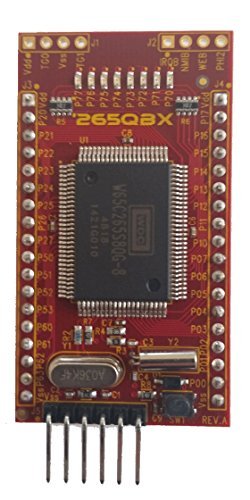The MENSCH microcomputer W65C265QBX is a small single board computer (SBC), 1.25" x 2.25", using the System on a Chip (SoC) W65C265S MCU. The W65C265S was invented and designed by Bill Mensch WDC's founder after he invented and designed the 65816 microprocessor. As a recognized pioneer of the microprocessor industry. Mr. Mensch's twenty two patented inventions were/are used on the original Motorola 6800 Microprocessor Family, MOS Technology 6502 Microprocessor Family, and WDC's 65C02 and 65816 Microprocessor Families. As an electrical engineer, 1971 BSEE from The University of Arizona (UA), having taught graduate level classes at Arizona State University (ASU) on SOC design for five years, advisor to four university colleges of engineering for over two decades, the MENSCH was designed in hopes that it will attract learners to consider a career based on an Electrical and Computer Engineering (ECE) education, hardware and software engineering. The MENSCH can be used to learn about all kinds of electronic components and all kinds of state-of-the-art programmable logic. Operating at 3.3 volts provides for easy connectivity with various state-of-the-art electronic components and modules such as sensors and actuators. Operating at 5.0 volts provides easy connectivity to 5.0 volts electronic components and modules. Data Sheet: http://www.westerndesigncenter.com/wdc/documentation/W65C265QBX.pdf






![Adafruit FTDI Serial TTL-232 USB Cable [ADA70]](https://m.media-amazon.com/images/I/41VxTkOnJ-L._SL75_.jpg)


